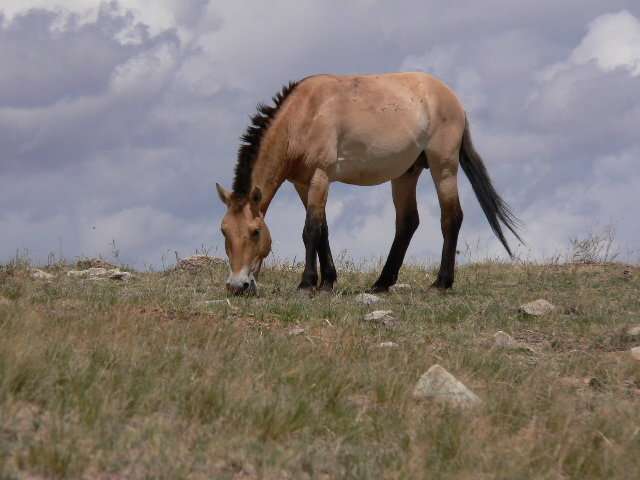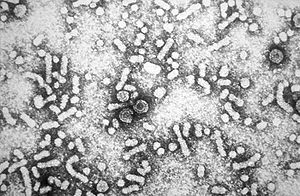Ancient DNA Reveals New Human History Of Eurasian Steppes
Posted on Categories Discover Magazine

The grassy Eurasian steppes cover thousands of miles, from northwestern China to Hungary, creating what one researcher calls a “highway” for cultural exchange and conquest. (Credit Wikimedia Commons)
A trio of new studies, two in Nature and the third in Science, analyzed genetic material from scores of ancient humans to create a new map of human movement, as well as the spread of language, the hepatitis B virus and horse domestication, across the sprawling Eurasian steppes. The ancient genomes sequenced for the papers — with more findings to follow, promise the authors — represent the largest collection of ancient human DNA ever studied.
Stretching nearly unbroken from Hungary to China, the steppes of Eurasia have been home to a number of mounted warrior cultures over the millennia, most famously Scythians, Huns and Mongols. Most researchers believe that it was here, in these sprawling grasslands, that horses were first domesticated and the Indo-European language spread.
But the hard evidence of the Eurasian steppes’ history, who innovated what and when, and who traveled where, has been in short supply, leaving scholars and armchair archaeologists alike to argue over the details.
Today, a massive project led by Danish evolutionary geneticist Eske Willerslev provides new answers — including a few surprises — to some of the questions long bedeviling the field. Let’s saddle up and take a ride on the double helix of discovery:
Building A Genomic Empire
The lead paper in Nature reports on the sequencing of 137 ancient human genomes spanning a steppe-sized slice of history, from about 2500 B.C. to the 16th century. The genomes came from the width and breadth of the Eurasian steppes and represent the largest-ever collection of ancient human genomic information, according to Willerslev.
One big caveat to note about this study: Geneticists typically repeat sequencing multiple times for greater detail and accuracy. For this phase of the research, however, the ancient genomes were sequenced, on average, just once.
During a press conference on Tuesday, members of the team said they are continuing to work with the material as its condition allows; finite amounts of preserved ancient DNA and other issues may make repeat sequencing impossible for some of the samples.
On the plus side, while working with so much ancient genetic material, the team was able to improve the sampling process to make it more efficient, cheaper and more precise.
The new information is particularly valuable because archaeological and linguistic evidence, as well as some earlier, more limited genetic studies, have not revealed a clear chronology of events as European and Asian populations ebbed and flowed across the steppes.
Genetically speaking, however, based on today’s research, it appears that earlier Western Eurasian farmers, already living on the steppes 5,000 years ago, were gradually replaced by mounted warriors of East Asian descent in several waves of migration that continued well into historic times.
At Tuesday’s press conference, Willerslev tied the population transitions to horse domestication, which first took place somewhere on the Eurasian steppes and ushered in a new era of mobility: “The steppe is like a massive highway, and suddenly you’re getting a car: the horse. And everything goes completely crazy.”
Scythians And Other Surprises
Fans of the iconic Scythians, a nomadic horse culture famed for its warriors and stunning metalwork, may be particularly interested in what the research uncovered about their oft-contested roots. While some scholars have placed the origins of the Scythians in the northern Caucasus, the narrow bridge of land between the Caspian and Black Seas, others have argued the horselords originated in Siberia and rode west.

Scythians were skilled in metalwork, often depicting horses, which were central to their culture. (Credit Wikimedia Commons)
What Willerslev and colleagues found, however, was that the Scythians, despite having a fairly uniform culture, were genetically diverse, and unlikely to have a single geographic point of origin. They were, said the study’s lead author Peter de Barros Damgaard, “a stateless confederation of warrior tribes” with at least some members originating in both of the areas previously put forth as the Scythian birthplace.
The Scythians, like the Huns and Mongols after them, rode to prominence on the backs of their horses, and the related study published today in Science (by Damgaard, Willerslev and colleagues) used genetics to probe existing theories about the dawn and spread of horse domestication. For this study, the team analyzed 74 ancient human genomes, ranging in age from 500 to 11,000 years old, as well as additional genetic data from modern populations spread across the Eurasian steppes.
Archaeologically speaking, the earliest firm evidence for horse domestication comes from Northern Kazakhstan and the eastern Eurasian steppes: the Botai culture that hunted and herded there more than 5,000 years ago. Shortly after the timeframe of the Botai in the east, the Yamnaya and related Afanasievo horse cultures came on the scene in the western Eurasian steppes.
Because of the timing of these cultures, a direct relationship between the two groups had been suggested. However, the authors of the today’s study found no evidence of genetic links between the Botai and the later western steppe cultures, which were primarily pastoralist.
The lack of linkage between the two groups, say the authors, suggests something else intriguing about horse domestication itself. It appears that horses were first domesticated by hunter-gatherers rather than farmers, who were responsible for the vast majority of animal domestication. In fact, only the dog and the reindeer are known to have been domesticated by hunter-gatherers.
Just because the Botai were apparently the first to domesticate horses, it doesn’t mean they were the only culture to do so. In fact, as a separate genetic study published earlier this year showed, the famous Przewalski’s horses, once thought to be the last truly “wild” horses on Earth, are actually the descendants of the Botai horses. Which means most domestic horses around today are not Botai kin, and that at least one other horse domestication event, still likely on the Eurasian steppes, occurred.

Przewalski’s horse turned out not to be so wild after all. (Credit Lee Boyd)
The Science study also uncovered evidence of two waves of migration from the western Eurasian steppes into South Asia, a topic that has been hotly debated by both archaeologists and linguists alike. Although the Yamnaya and Afanasievo cultures have been proposed as the most likely groups to have traveled south and introduced western Eurasian genetic signatures into South Asian populations, the authors behind today’s paper found no evidence that either group did so.
Instead, the team uncovered suggestions of two waves of migration into South Asia: a very early one prior to the Bronze Age (ruling out the Early Bronze Age Yamnaya and Afanasievo) and a second during the Late Bronze Age, 3,200-4,300 years ago, which may have introduced Indo-Iranian languages into the region.
Before everyone gets all up in arms about these findings (you Yamnaya afficionados in particular can be insufferable), it’s important to remember that these are early findings. Exciting, yes, but still early. And though the database of ancient genomes is increasing in number, geographical and chronological range and also quality, there is still plenty more information to be found and reconciled with the archaeological, linguistic and historical records.
This is, after all, how science works. As new evidence becomes available, you have to revise and sometimes scrap your hypotheses.
The B Team
The second Nature paper combined the 137 ancient human genomes sequenced in the first with ancient genomic information previously reported in other studies. The goal here was less about the human genome, however, than about an unwanted guest lurking within its hosts. Specifically, the authors identified a dozen full or partial genomes of the hepatitis B virus (HBV) in 25 of the human samples, including at least one strain of the virus that is now extinct.
One of the HBV genomes was about 4,500 years old, making it the oldest such viral genetic material obtained.
The findings are important for a few reasons. More than 250 million people live with debilitating, chronic HBV infection and many die from its complications each year. Attempts to understand modern strains have been confounded by both its genetic complexity and its unstable mutation rate. Having ancient HBV strains sequenced will help researchers reconstruct how the virus has mutated in the past and what it might do in the future, potentially leading to better treatments.

Hepatitis B virus (Credit Wikimedia Commons)
Looking at the topic more broadly, the mere fact that the team was able to determine the presence of a specific strain of a virus in individual samples as old as 4,500 years tells us that it may be possible to find other viruses of that age and learn about their origins and evolution.
It may also be possible to track human migration through these vestiges of the ancient viruses our ancestors carried with them.
Willerslev noted that members of the team are still screening the ancient human genomes in today’s studies for additional bacteria and viruses, but that, so far, about 10 percent of the individual samples have pathogens of some type, with about half of the teeth in the study set containing evidence of infection.
“It certainly cracked my romantic picture of the Bronze Age,” Willerslev said drily.